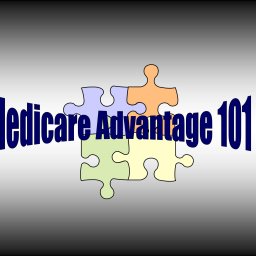
Top Medicare Facts to Keep You Informed
Key Takeaways:
- Original Medicare provides many core coverages, although Part C plans (which can be more expensive) typically add vision, hearing, dental, health and wellness, and limited prescription coverages.
- There are many vital coverages not provided by Medicare, including custodial care, dental care, eye exams, dentures, hearing aids, and more.
- You can only sign up for Medicare during the open enrollment period, which lasts between October 15 and December 7 for 2021.
- Your costs for Parts A and B under Original Medicare range between $148.50 and $504.90, depending on your income.
- Medigap plans are designed to supplement Original Medicare, while Part C plans are intended to replace them and frequently expand coverage.
1. Medicare Provides a Wide Variety of Coverages
The Different Parts of Original Medicare
Original Medicare, the one administered by the U.S. federal government, is made up of three core parts, each of which provides different coverages:
- Part A — Provides for 80% of the services covered by Medicare, including hospital insurance (along with long-term hospital stays), skilled nursing facility care, custodial services, hospice and palliative care, and home health care.
- Part B — Provides the remaining 20% of the coverages found under Original Medicare, including medically necessary services (those used to address or diagnose your condition) and preventative services (those that help you prevent or detect early illnesses). Specifically, Part B covers clinical research, ambulance services, durable medical equipment (DME), mental health, obtaining a second opinion before surgery, and limited coverage for outpatient prescription medications.
- Part D — Provides optional coverage for some—if not all—of your prescription drug expenses.
Part C (Advantage) Plans
Part C plans, also known as Advantage plans and Medicare Health plans, are issued by private insurance carriers and combine all of the coverages found under Parts A, B, and D. Plans can differ depending on the company you choose, and many add key coverages like:
- Vision – Contacts, eyeglasses, routine vision care, preventative exams, etc.
- Hearing – Hearing aids, routine hearing care, etc.
- Dental – Dentures, x-rays, regular cleanings, etc.
- Health & Wellness Programs & Services – Exercise and fitness classes, etc.
- Prescriptions – An insurance carrier may cover some prescription medications not covered under Original Medicare
Related: How to Choose a Medicare Advantage Plan
2. There Are Several Key Coverages Not Provided by Medicare
According to the Medicare.gov website, Original Medicare doesn’t cover things like:
- Long-Term Care (also called custodial care)
- Most dental care
- Eye exams related to eyeglass prescriptions
- Dentures
- Cosmetic surgery
- Acupuncture
- Hearing aids (including fitting)
- Routine foot care
The good news is that you can gain some, if not all, of these coverages back if you purchase a Part C (Advantage) plan, depending on the insurance carrier and the specific plan you choose.
3. There are Only Certain Times When You Can Sign Up for Medicare
Original Medicare
Medicare’s Open Enrollment Period, also referred to as Fall Open Enrollment and the Annual Election Period, is when you can change aspects of your health and drug coverage. For 2021, these dates fall between October 15 and December 7.
Advantage Plans
If you miss the Fall Open Enrollment period for Original Medicare, you can switch from one Medicare Advantage plan to another between January 1 and March 31 each year. During this time, you can also go back to Original Medicare if you currently have an Advantage plan in place.
Prescription Coverage
You can sign up for stand-alone prescription drug coverage under Medicare Part D during the same timespan as for Medicare Advantage plans. You can also change from one stand-alone drug plan to another, as well as drop your Advantage Plan and return to Part D coverage under Original Medicare.
If you don’t sign up for creditable prescription drug coverage and continue not carrying it for 63 days or more, you’ll have to pay a late enrollment penalty that’s attached to your premium. It’s critical to emphasize that you’ll generally have to pay this penalty for as long as you have Medicare drug coverage.
4. Know What You’ll Pay for Medicare Coverage
Part A & B Costs
For the most part, you won’t pay any premium for Part A under Original Medicare, although you’ll pay a standard Part B premium of $148.50 per month for 2021 if you make $88,000 or less. Your monthly premium increases from there, depending on your income:
- $88,000 to $111,000 — $207.90
- $111,000 to $138,000 — $297.00
- $138,000 to $165,000 — $386.10
- $165,000 to $500,000 — $475.20
- $500,000+ — $504.90
Part C Costs
What you’ll pay for your Advantage plan depends on several factors, including the insurance carrier you choose, as well as co-pays, deductibles, and co-insurance.
Part D Costs
Perhaps more than any other, Part D costs vary depending on a variety of factors, including your deductible, if you choose in-network vs. out-of-network pharmacies, if you choose generic or brand name medications, what (and if) a carrier charges a monthly fee for your plan, and your modified adjusted gross income.
5. There Are Important Distinctions Between Medicare, Medigap, and Advantage Plans
We’ve already outlined how Original Medicare works and the coverages it provides. But how does it differ compared to Medigap coverage?
Medigap
Medigap, also known as supplement plans, helps cover the “gap” left by Medicare for costs related to copayments, coinsurance, and deductibles. Plans are numbered A-N (Plans F and G are generally two of the most popular), with each one offering different coverages for things like Part A and Part B, hospice, skilled nursing, and out-of-pocket limits.
Related: Medicare Supplement Plan F Versus G Explained
According to Investopedia, roughly 80 percent of Medicare recipients “supplement their insurance with Medigap (Medicare Supplemental), Medicaid, employer-sponsored and/or Part D prescription drug policies.”
Advantage Plans
Medicare Advantage plans often cost less than Medigap plans. The trade-off for lower premiums is that Part C plans frequently limit you to in-network doctors and hospitals (even within specific geographical locations), and you might not have benefits for extras like eyeglasses, dental care, or gym memberships.
Where does all of this leave you?
Do You Have Additional Questions About Medicare?
With more than a decade of experience, the staff at IHS Insurance Group has the knowledge you need when it comes to your Medicare questions. Don’t wait any longer—reach out today!
Need a FREE Quote or have questions regarding Medicare Coverage? We have three convenient ways to reach us:
- If you prefer to talk to a licensed agent directly, please call (866) 480-5063
- If you prefer to fill out a quick form and have an agent get back to you at your convenience, use the GET A FREE QUOTE tool.
- Lastly, for those that want an immediate quote, please click HERE.
Also, check out our Medicare FAQs here.







